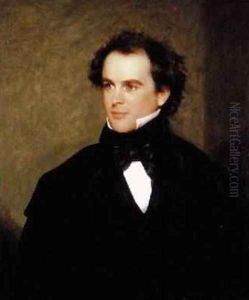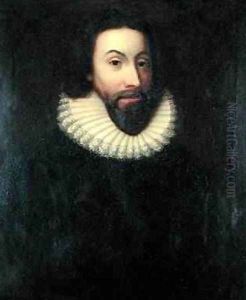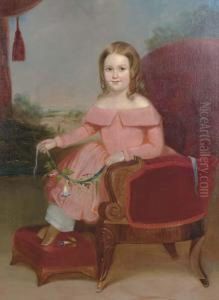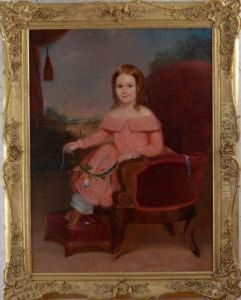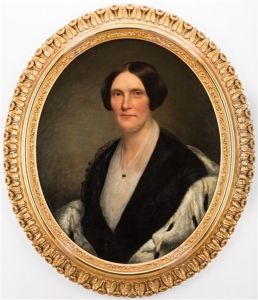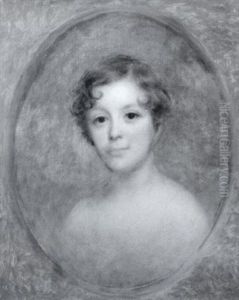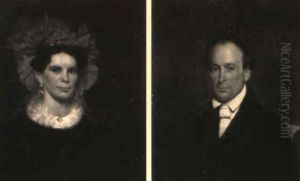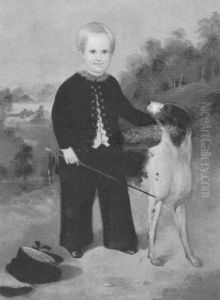Charles Osgood Paintings
Charles Osgood, born in 1809 and passing away in 1890, was an American painter whose work is most closely associated with the portrait genre. Throughout the 19th century, Osgood made a significant mark on the American art scene through his ability to capture the essence of his subjects with a remarkable degree of sensitivity and skill. His work, though not as widely recognized today as some of his contemporaries, played a vital role in the development of American portraiture.
Osgood's early life and training are somewhat obscured by the lack of comprehensive records, but it is known that he showed an early aptitude for art. He was born in Salem, Massachusetts, a town with a rich maritime history that influenced many aspects of its cultural development. Osgood's education in art took a traditional route, beginning with an apprenticeship under a more experienced artist, as was common in the 19th century. His talent quickly became apparent, and he soon sought to further his studies and refine his techniques.
Throughout his career, Charles Osgood became known for his ability to capture not just the physical likeness of his subjects, but also their inner character. His portraits are characterized by a meticulous attention to detail, a rich palette, and an almost lifelike quality that seemed to breathe life into the canvas. Osgood's subjects ranged from prominent figures of his time to more personal, intimate portrayals of family and friends. This versatility in subject matter, combined with his exceptional skill, garnered him a respectable reputation among his peers and art patrons alike.
Despite his success, Osgood remained relatively tied to his New England roots. He was a prominent figure in the local art scene, contributing to its growth and participating in the cultural life of the community. His works were exhibited in various galleries and garnered praise for their technical skill and emotional depth. However, with the advent of new artistic movements and changing tastes in the late 19th and early 20th centuries, Osgood's traditional approach to portraiture became less fashionable, leading to a gradual decline in his posthumous fame.
Today, Charles Osgood's paintings can be found in several museums and private collections, serving as a testament to his skill and dedication to the art of portraiture. While he may not have achieved the lasting fame of some of his contemporaries, his contribution to American art, particularly in the realm of portraiture, remains undeniable. Osgood's legacy is that of a skilled artist who captured the essence of 19th-century America through the faces of its people, providing future generations with a window into the past.
